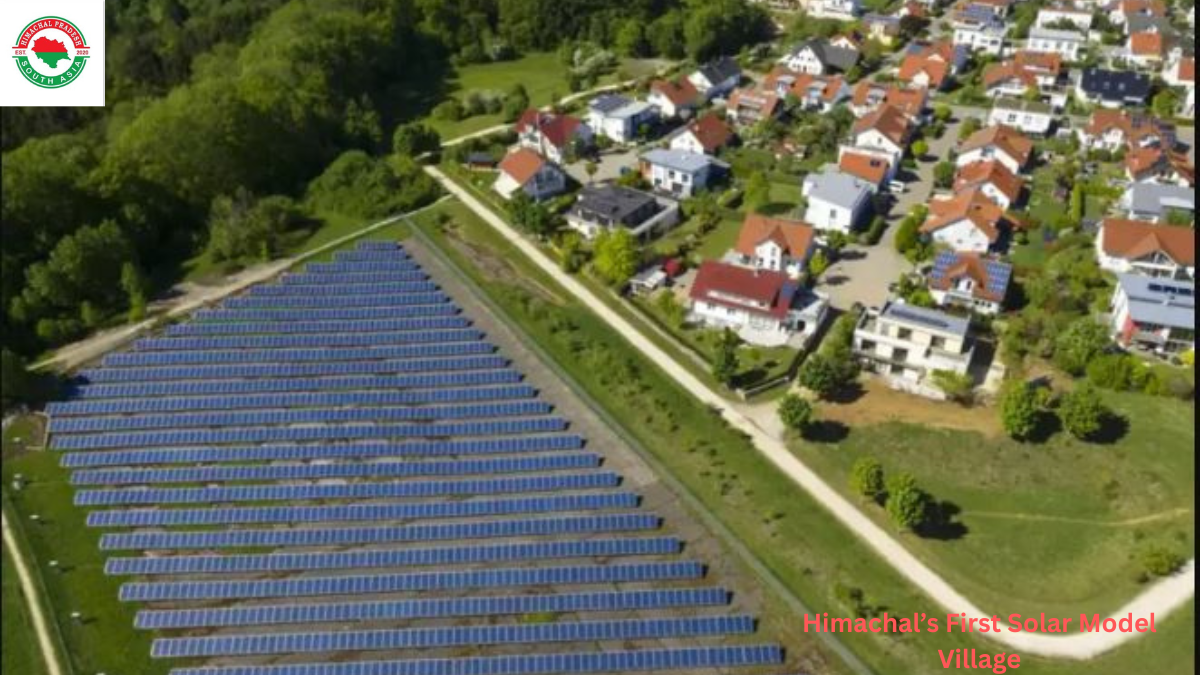In a groundbreaking stride towards sustainable development, Raja Khas a quaint village nestled in the Indora sub-division of Kangra district, Himachal Pradesh has been officially recognized as the state’s first Solar Model Village. This monumental achievement aligns with the objectives of the Pradhan Mantri Surya Ghar: Muft Bijli Yojana, aiming to revolutionize rural energy consumption through renewable sources.
Solar Model Village Success: A Beacon of Sustainable Progress in Himachal
Raja Khas’s transformation into a solar-powered haven is not merely a local triumph but a testament to India’s commitment to green energy. The village’s selection was based on its exemplary adoption of solar energy solutions, setting a precedent for other rural communities. This initiative underscores the potential of decentralized renewable energy systems in enhancing rural livelihoods and promoting environmental stewardship.As part of its designation, Raja Khas has been awarded a grant of ₹1 crore to bolster its solar infrastructure. This funding is earmarked for the installation of rooftop solar panels, solar street lighting and other renewable energy projects that will collectively reduce the village’s carbon footprint and energy expenses.
Building Capacity and Engagement in Himachal’s Solar Model Village
The success of Raja Khas as a Solar Model Village is deeply rooted in community participation. Local residents have been actively involved in the planning and implementation of solar projects, fostering a sense of ownership and responsibility towards sustainable practices. Training programs and workshops have been conducted to educate villagers on the maintenance and benefits of solar energy systems, ensuring the longevity and efficiency of the installations.
How a Solar Model Village is Catalyzing Regional Development
The transformation of Raja Khas into Himachal’s first Solar Model Village is sparking a ripple effect across the region, motivating nearby communities to embrace sustainable, solar-powered living. Recognizing the village’s pioneering efforts, the Himachal Pradesh government has announced plans to replicate this model in every district, aiming to establish a network of eco-conscious villages that collectively drive the state toward its ambitious renewable energy targets.
To facilitate this vision, a dedicated Model Solar Village Implementation Agency has been appointed to craft a comprehensive Detailed Project Report (DPR) and lead Raja Khas toward becoming a fully solar-powered settlement. Deputy Commissioner Hemraj Bairwa affirmed the administration’s commitment to rolling out the Pradhan Mantri Surya Ghar Yojana with precision, ensuring cleaner energy solutions reach every corner of the district and reduce reliance on traditional electricity grids.
Adding to this momentum, Ramesh Thakur, Project Officer of the Himachal Pradesh Energy Development Agency (Himurja) and DLCC Member Secretary, stated that while the Himachal Pradesh State Electricity Board Ltd is executing the on-ground implementation, Himurja has taken on the crucial role of nodal agency, responsible for tracking and monitoring progress at every stage of the project.
How the Solar Model Village Aligns with India’s National Energy Objectives
The initiative aligns seamlessly with India’s broader energy objectives, particularly the National Solar Mission, which aspires to increase the country’s solar capacity significantly. By empowering villages like Raja Khas to harness solar energy, India moves closer to achieving its targets for renewable energy adoption, energy security and reduction of greenhouse gas emissions.
Challenges and the Road Ahead for the Solar Model Village Initiative
While the success of Raja Khas is commendable, scaling this solar model village presents challenges, including the need for substantial investment, technical expertise and continuous community engagement. Addressing these challenges requires collaborative efforts between government bodies, private sector stakeholders, and local communities to ensure the sustainability and scalability of solar initiatives.A Solar Model Village Implementation Agency has been appointed to prepare a detailed project report and guide the village’s complete transition to solar power. The plan includes solar installations in homes, public buildings and incentives for local bodies.
Conclusion
Raja Khas stands as a shining example of how rural communities can lead the way in embracing renewable energy, fostering sustainable development and contributing to national energy goals. The village’s journey underscores the transformative power of solar energy in enhancing quality of life, promoting environmental conservation and driving economic growth. As Himachal Pradesh and the rest of India look towards a greener future, the success of Raja Khas offers valuable insights and inspiration for the path ahead.
